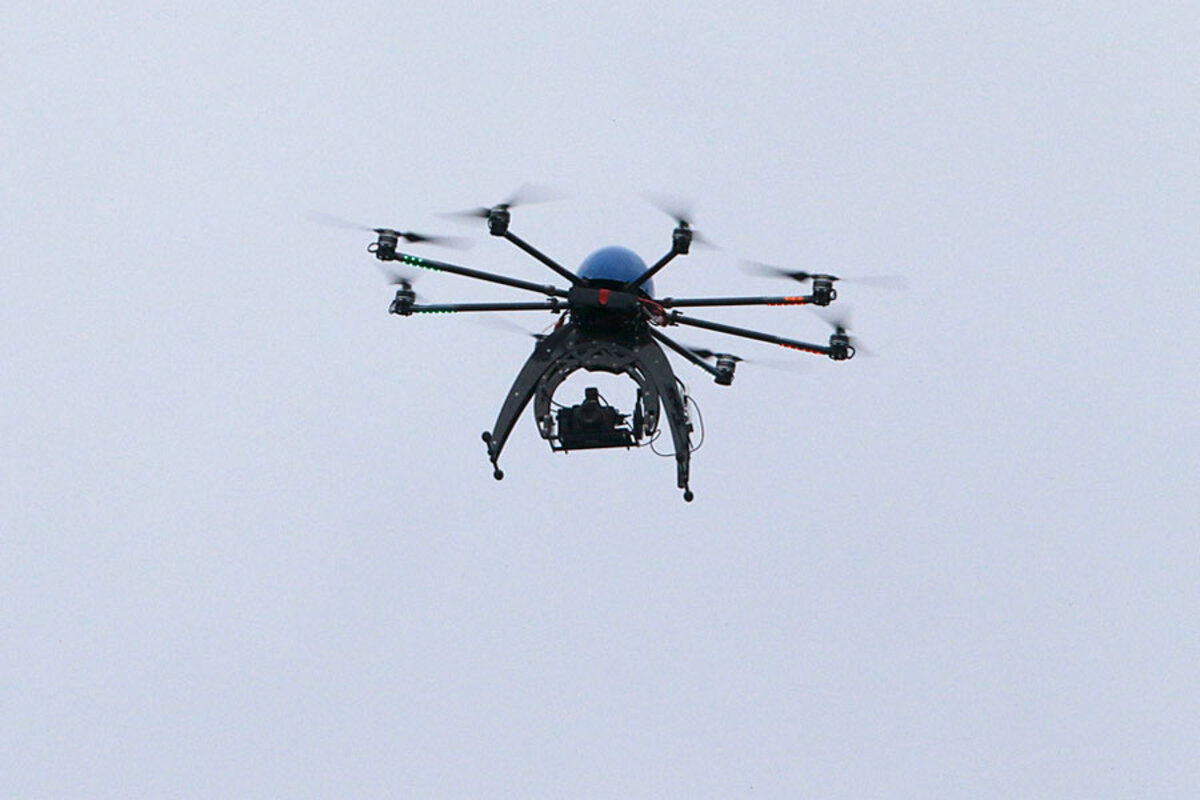As commercial drone use explodes, will FAA change policy?
Loading...
Photographers and cinematographers from all corners of the industry are increasingly interested in drone use. Drone usage is now such as California and New York.
In California alone, particularly in areas such as Silicon Valley, real estate photography makes up 35 percent of all commercial drone use in the state, according to Dan Gettinger of Bard College’s Center for the Study of the Drone. Nationwide, 18.4 percent of commercial drone licenses are granted for real estate purposes.
And interest in aerial real estate photography only seems to be growing.
“In the past year,” said Mr. Gettinger in a phone interview with ���Ǵ���, “real estate has emerged as a bigger category of drone use.”
“Seventy-five percent of our business is real estate related,” said Bill McGonagle of Cape Cod Aerials, an aerial photography business in one of the wealthiest parts of Massachusetts. “People seek out aerial photography for high-end real estate. That’s become the norm.”
Yet, the rise of commercial drone use has muddied the regulatory waters for drone users. Although the Center for the Study of the Drone says that the Federal Aviation Administration (FAA) reports just over 6,000 drones under , there are 400,000 FAA-registered hobbyists, some of whom could be engaging in under-the-table commercial dealings.
According to Parker Gyokeres of Propellerheads Aerial Photography, a Section 333-compliant photography company located in New York, his focus has shifted from real estate photography to commercial filming over the years, as demand for real estate photography has decreased in his area.
“The shift in our demand has been due to our pricing structure,” Mr. Gyokeres told the Monitor. “It is easier for a realtor to go out and buy a drone and do their own filming now.”
The proliferation of drones amongst younger people has also cut demand for professional services. Gyokeres says, “We are being overrun by kids who own one drone.”
The biggest danger in the proliferation of small time, semi-commercial drone use is that often, small time users are not insured and don’t necessarily have the experience to avoid catastrophic accidents, says Gyokeres.
If a hobby drone user flies his unmanned aerial vehicle (UAV) too close to an airport or airline flight path, for example, it could cause a terrible accident. Inexperienced drone pilots could also lose control of their drones and accidentally harm a customer – an event that could have tremendous legal and financial repercussions for the uninsured.
Currently, FAA commercial regulations are so strict that many opt not to go the commercial route, despite interest, says Abby Speicher of DART Drones, a FAA 333 exempt company offering drone training, in an email to the Monitor. It takes four to five months for the FAA to grant a Section 333 exemption for commercial drone use, and to gain such an exemption, one must have a full sport pilot’s license. The cost and time investment of pilot training necessarily deters many.
It is difficult, however, for the FAA to regulate how drone pilots use their drones. According to Mr. Gettinger, the FAA is usually quick to follow up on commercial Internet postings (on YouTube and similar sites) by drone users with hobby use registrations, but it has little ability to regulate beyond that.
“Unfortunately, there are many people offering drone services today without the approval of the FAA,” says Ms. Speicher. “We are hoping that our classes help promote safer skies so that the FAA can come out with regulations that will be easier for commercial pilots to fly legally.”
Regulatory change could happen as soon as June, 2016.
Expectations for the new rules differ.
Mr. McGonagle of Cape Cod Aerials believes that regulations will become stricter when they change. “It’s only a matter of time before there is an accident,” he says. “It’s not if, it’s when.”
Speicher disagrees, saying that the FAA is expected to create an Airmen Knowledge Test, a two and a half hour exam designed specifically for commercial drone pilots.
Meanwhile, the convenience and elegance of aerial drone photography and videography mean that drones will likely become a permanent fixture of the industry.
“We believe that drones are here to stay for the real estate industry,” said Speicher. “The real question is will realtors be the ones to capture the aerial photos, or will they hire contractors instead.”





